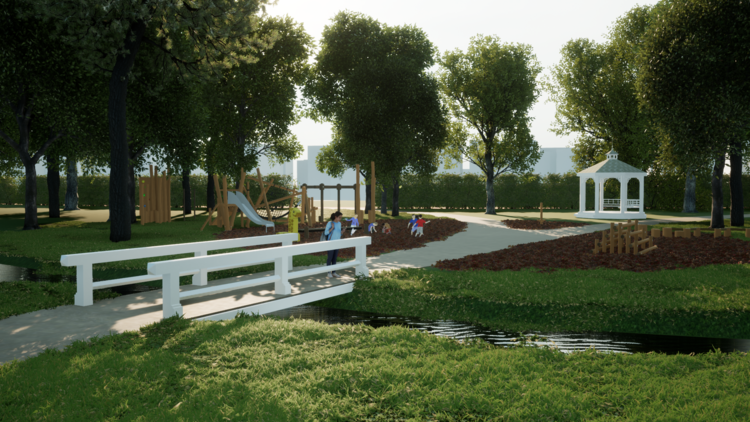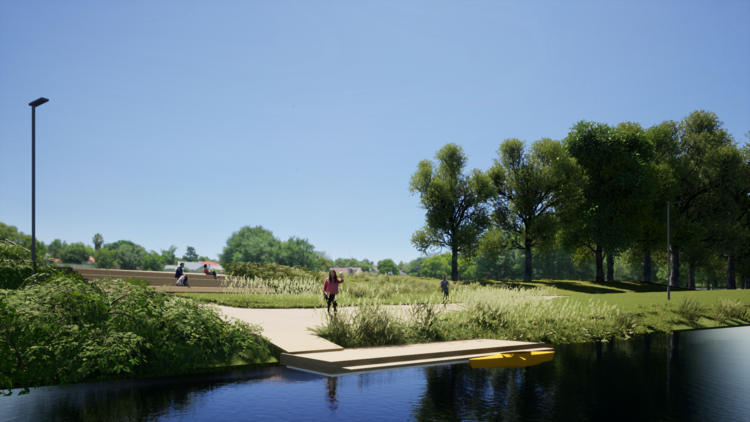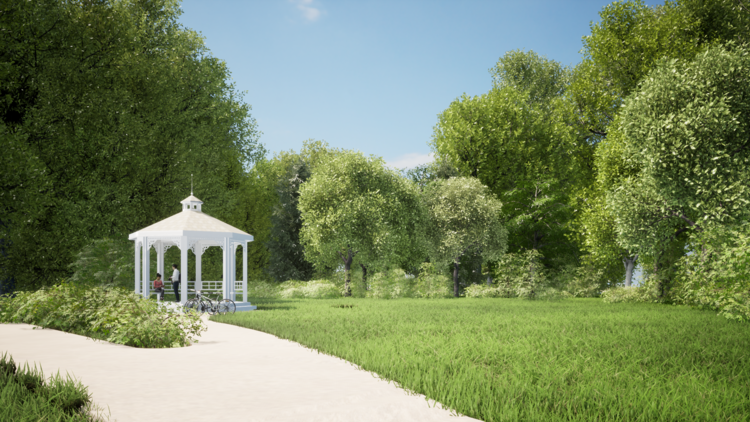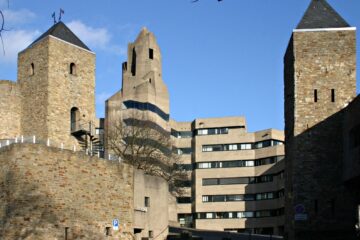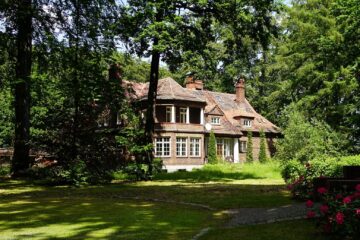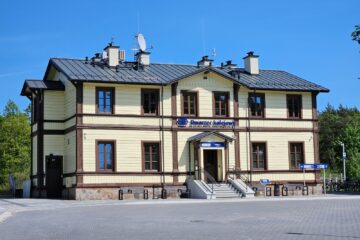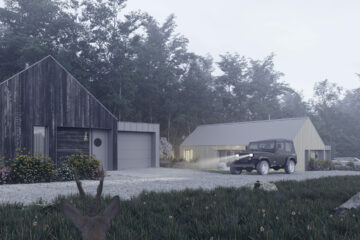The Bydgoszcz Canal and its surroundings will soon be the city’s showpiece again. The city is working on a comprehensive revitalisation of the surroundings of the Bydgoszcz Canal. At the same time, a complex concept of even better use of the Canal’s banks is being developed. Public consultations will determine the direction in which the surroundings will change.
– We are consistently working to restore the old splendour of the areas along the Old and New Bydgoszcz Canal – says deputy mayor of Bydgoszcz, Michał Sztybel. – We are carrying out projects that allow us to expose its historical values and preserve its green character. At the same time, we want to introduce new recreational functions, so that this place will also enable active leisure. We also want to adapt the existing infrastructure to better meet the expectations of the residents: to provide additional resting places and new planting. We will introduce solutions to improve the aesthetics of the small infrastructure in the form of benches, railings and lighting. An important element is the introduction of illuminations to highlight the qualities of the canal also after dark. As a first step, next year we will commission the illumination of the locks on the Old Canal. To achieve the best possible effect, we will work according to a concept we are preparing and will consult with residents.
The initial concept for developing the surroundings of the Bydgoszcz Canal has been presented to housing estate councils and residents’ associations. It will go out to public consultation in early spring. All residents will be able to have their say. The document will determine the target development of the area. All new developments, including projects submitted under the BBO, will have to be compatible with the emerging study.
In the past year, more than a dozen large investments were made in the surroundings of the Bydgoszcz Canal. Their value is estimated at PLN 10 million. Preparations for further tasks are underway. The Bydgoszcz Canal Museum plays an important role in the revitalisation of this part of Bydgoszcz.
– We want the surroundings of the Canal to become not only a nice place, but also vital – says Tomasz Izajasz, curator of the Bydgoszcz Canal Museum. – Hence a number of ideas related to organising cultural events, games, picnics and shows on its banks. Thanks to the fact that two years ago we began operating in new premises, we can now carry out many more projects that benefit Bydgoszcz residents. We will also make our observations during the consultation.

Kanał Bydgoski – key elements of the concept
The designers assume that all changes must first and foremost strengthen the role of the canal in the area. In their study they proposed, among other things:
- an emphasis in investment activities on investments related to conservation works, repairs, ongoing maintenance, etc. concerning the Bydgoszcz Canal as a historic site;
- strengthening in the spatial composition of the object through conservation activities related to preservation of the highest possible values of the locks, banks of the canal, accompanying buildings and the closest surroundings of the canal;
- emphasis on activities connected with preservation of the object and its history (including the fragments subjected to reconstruction or filling in) – in space and in the consciousness of residents – decorative illumination of locks and banks (in selected places), information points (boards) connected with history, structure of the object and other activities;
- dividing the area into zones with different functions;
- adaptation of selected forms of development of areas of high natural and cultural value;
- introduction of standards for forms of development and maintenance taking into account the characteristics (stylistic) of the spatial composition and functions (historical and/or contemporary);
- emphasising the entrance zones, taking into account improved accessibility for all groups and the aesthetic value of the spatial composition (representative zones);
- defining zones for the location of additional equipment;
- prioritising trees and valuable greenery – new elements should not cause felling and damage to trees;
- introduction of illuminations highlighting the brick walls of the locks;
- use of animal-friendly solutions;
- unification of lighting fixtures;
- unification of elements of small architecture;
- renovation of pavements;
- use of terrain depressions and former ditches as an element of the rainwater and snowmelt management system;
- use of so-called “small retention” to retain some of the rainwater;
- use of small sports and play architecture of a forest character with a predominance of wood and steel,
- all pedestrian routes also permitted for cyclists;
- designation of additional places for anglers.
Bydgoszcz Canal on the UNESCO list
The Old Bydgoszcz Canal is a preserved section of an artificial waterway built between 1773 and 1774. The concept of building a water connection between the Brda and Noteć rivers crossing the waterline was created during the reign of Stanisław August Poniatowski. In 1766, one of the most prominent cartographers, Franciszek Florian Czaki, drew up a design for the Brda-Notec canal. Due to the First Partition of Poland, which took place in 1772, work on the project was put on hold. The concept of connecting the Brda and Noteć rivers was taken over and realised by King Frederick II of Prussia, on the basis of a project also created in 1772 by Franz Balthasar Schönberg von Brenkenhoff. Construction work, led by Wilhelm Dornstein, lasted from spring 1773 to mid-September 1774, during which time a 26.7-km-long canal with 10 wooden locks was built. We are working towards the recognition of the Bydgoszcz Canal as a historic monument. This is an essential step that will then allow us to apply for UNESCO World Heritage status.
Read also: Architecture in Poland | Bydgoszcz | Places , Squares, Parks | Metamorphosis | whiteMAD on Instagram


